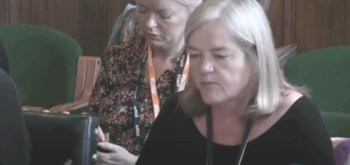On 2nd October 2007, a 26 year old Polish care worker, Magda Pniewska, was walking home from the nursing home where she worked in south London. As she was talking to her sister on a mobile phone she was hit in the head by a single bullet fired by one of two men who had decided to have a shoot out in the vicinity of a block of flats through with Ms Pniewska was walking. She was killed instantly. The man who fired the fatal shot was never prosecuted. Armel Gnango was convicted of her murder after a trial at the Central Criminal Court in 2008. On appeal however his conviction was overturned when the Court of Appeal ruled that the basis on which the judge had left the ace to the jury, namely that this was a joint enterprise affray, was wrong in law. The prosecution then appealed to the Supreme Court.
Straight out of the MoJ
The decision of the Supreme Court in R v Gnango [2011] UKSC 59 published last week is a truly astonishing one. An indication that such a result might follow was foreshadowed by the fact that as early as paragraph 2 the judges giving the leading judgment state that ‘in resolving the point of law it will be appropriate to have regard to policy’. The reality is that the decision is based almost entirely on policy and might as well have been written by a policy unit in the Ministry of Justice as opposed to by what are supposed to be some of the finest legal brains in the country.
The usual approach to appeals, establish the relevant legal principles and then see if the conviction is safe according to those principles, has been completely abandoned. Never was it more true to say that hard cases make bad law. The appallingly tragic facts of this case cried out for a conviction and no matter than the actual killer was not in the dock and that the person on trial had not fired the fatal shot, instead this is a decision based on finding a justification for upholding the conviction.
This case has been a shambles of legal thinking by prosecutors and judges alike. The judge at trial rejected the prosecution’s preferred approach to the basis of conviction, namely that D had aided and abetted the murder of M by X in the course of a shoot out of which he was meant to be the victim, because of the problem that this meant that D must have been a party to his own attempted murder. Then the Crown argued that D was guilty on the basis of a ‘joint enterprise’ to kill or cause serious injury to each other.
However, this was also rejected for the same reasons. Instead the judge directed the jury that they could convict only if they were sure that D and X were in a joint enterprise to commit affray, that X murdered M on the basis of transferred malice and that D realised that X might kill with the requisite intent. This line of reasoning has been called ‘parasitic accessory liability’. The problem with this is however that that argument and therefore the whole basis on which the jury must have convicted was rejected in both the CA and the SC!
Flawed reasoning
Having rejected the argument that this was a joint enterprise to commit affray, then rejected the concept of a joint enterprise to kill each other, and finally rejected the idea that D could not be convicted on the basis of aiding and abetting a crime of which he was the intended victim; the Supreme Court then arrived at the conclusion that, on the basis of the directions the judge gave them, the jury COULD have convicted D even though this was not on the basis of the case as left to them by the judge! In order to justify their decision, the Supreme Court revived the original argument of the Crown, abandoned in the trial court and not argued before the Court of Appeal, namely that D had aided and abetted X’s attempt to kill him (D) and because X was guilty of the murder of M on the basis of transferred malice, so too was D.
A more unprincipled route to upholding a conviction because policy dictates that result, rather than being based on established legal principle would be hard to find. The flaws in the reasoning of the majority are exposed in the single dissenting judgment of Lord Kerr.
It seems likely that in time and upon further reflection it will be his principled judgment that will be seen to be the correct way in which to analyse a case such as the present. The authority that this decision will carry is further undermined by the fact that whilst six of the seven judges concur in the result only three are associated with the principal judgment and three other judges give their own reasons, two of whom specifically reject the argument that this was a case of aiding and abetting at all and consider D was liable for murder as a principal. So even after all this argument the judges who wished to uphold the conviction could not agree on the basis for so doing. Quite how a conviction can properly be said to be safe when it is manifestly not the basis on which the case was left to the jury is a mystery that will baffle many legal minds.






